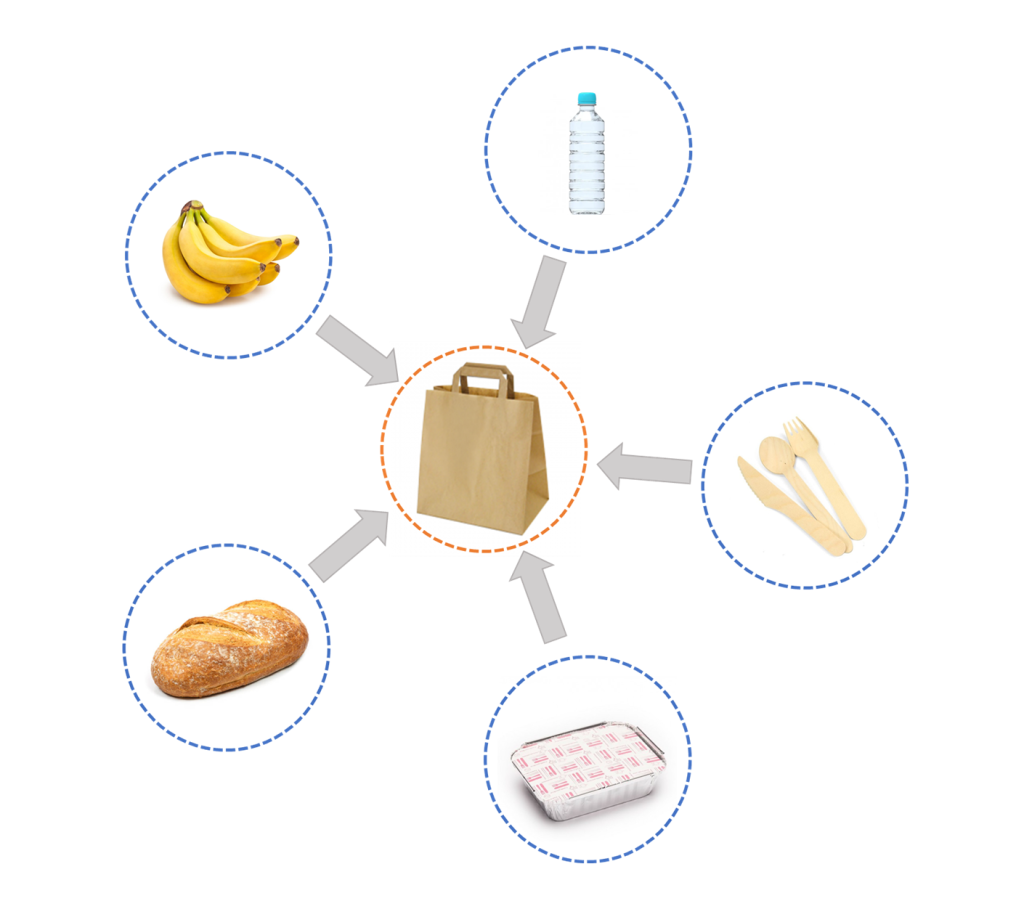I started volunteering in a centre known as “Humanitarian Hub” in Brussels where different NGOs and associations such as Serve the city Brussels or Red Cross operate. The centre provides people shelter, access to showers, play or charge their phones during the day time, as well as, two warm meals per day. The beneficiaries include a wide range of people in different situations, from asylum seekers to people with low incomes.
After my first day as a volunteer, I was amazed at the efficiency of the centre’s operations. First, because they managed to provide each day a bag that contained at least a bottle of water, a piece of bread, a piece of fruit and a warm dish; and secondly, their ability to coordinate the transportation of the food from the location where the food was stored to the centre, since the food would arrive warm and ready to be served.
Logistics is an essential aspect of the operations of non-profit organizations, such as food banks. They rely on the food collection from markets and individual or corporate donations. Having an efficient supply chain, ensures that they are able to get, store and distribute food by minimizing the waste, with the minimum cost associated as possible and maximizing the number of people they can reach. On regular days, the centre would distribute around 400 lunch bags and a slightly fewer during the dinner shift. However, on some days, they could provide food to almost 700 beneficiaries
When a volunteer goes, they primarily assign them tasks such as preparation of the bags (Curious fact: the preparation was organised as a linear production line, with different workstations.), distribution, trash sorting or cleaning the canteen; meaning that little was seen about all the operations behind. My curiosity lead me to start asking people about the logistics and operations involved, and it showed me how the coordination of operations and logistics, along with the work of volunteers and the managers (called team leaders) played a crucial role in running the services while spending as little as possible.
The food provided came mainly from two different sources, donations, and from another project that collected once a week the food that would have been thrown away in a market of the city. After, the food collected, it was stored and cooked in another association that would also place the meals into individual containers to help the distribution. The containers were stored until needed, taking into account their perishability. Daily distribution would start around 12:30 PM or 18:30 PM (depending if it was lunch or dinner shift), and thirty minutes before the scheduled time, a van would arrive at the centre with the individual containers that would be packed in larger thermal boxes, ensuring that the food was warm when distributed. The food was warmed before transport from the cooking association to the centre.
Nowadays, I’m still amazed of how a volunteer-association network has been stablished to help others, and how it manages smooth shifts most of the time. Some key considerations for logistics and operations of these type of associations include:
1. Donation Management: Food banks rely on donations of food from individuals, businesses, and other organizations. Effective donation management includes developing relationships with donors, ensuring that donated food meets quality and safety standards, and tracking donations to ensure that food does not go to waste.
2. Inventory Management: Inventory management is essential in ensuring that food banks have the right types and quantities of food available. This includes tracking inventory levels, monitoring expiration dates, and rotating stock to ensure that the oldest food is distributed first.
3. Storage: Proper storage of food is critical in ensuring that it remains safe and fresh. Food banks should have appropriate storage facilities, including refrigeration and freezer space, to store perishable items.
4. Transport and Distribution: Food banks rely on a network of volunteers and partners to transport and distribute food to people in need. Effective transport and distribution logistics include optimizing routes, coordinating with partners, and ensuring that food is delivered safely and efficiently.
5. Data Management: Data management is essential in tracking and reporting on the impact of food bank operations. This includes tracking food distribution, analysing demographics of food bank users, and measuring the impact of food bank services on food insecurity and health outcomes.
In conclusion, we hardly consider the significance of logistics and operations in our daily lives, yet they play a very important role. The Humanitarian Hub and its network serve as an example of the importance of efficient coordination between logistics and operations. While there is always room for improvement, I believe that the Humanitarian Hub’s successful operations demonstrate the benefits of effective logistics and operations management.



